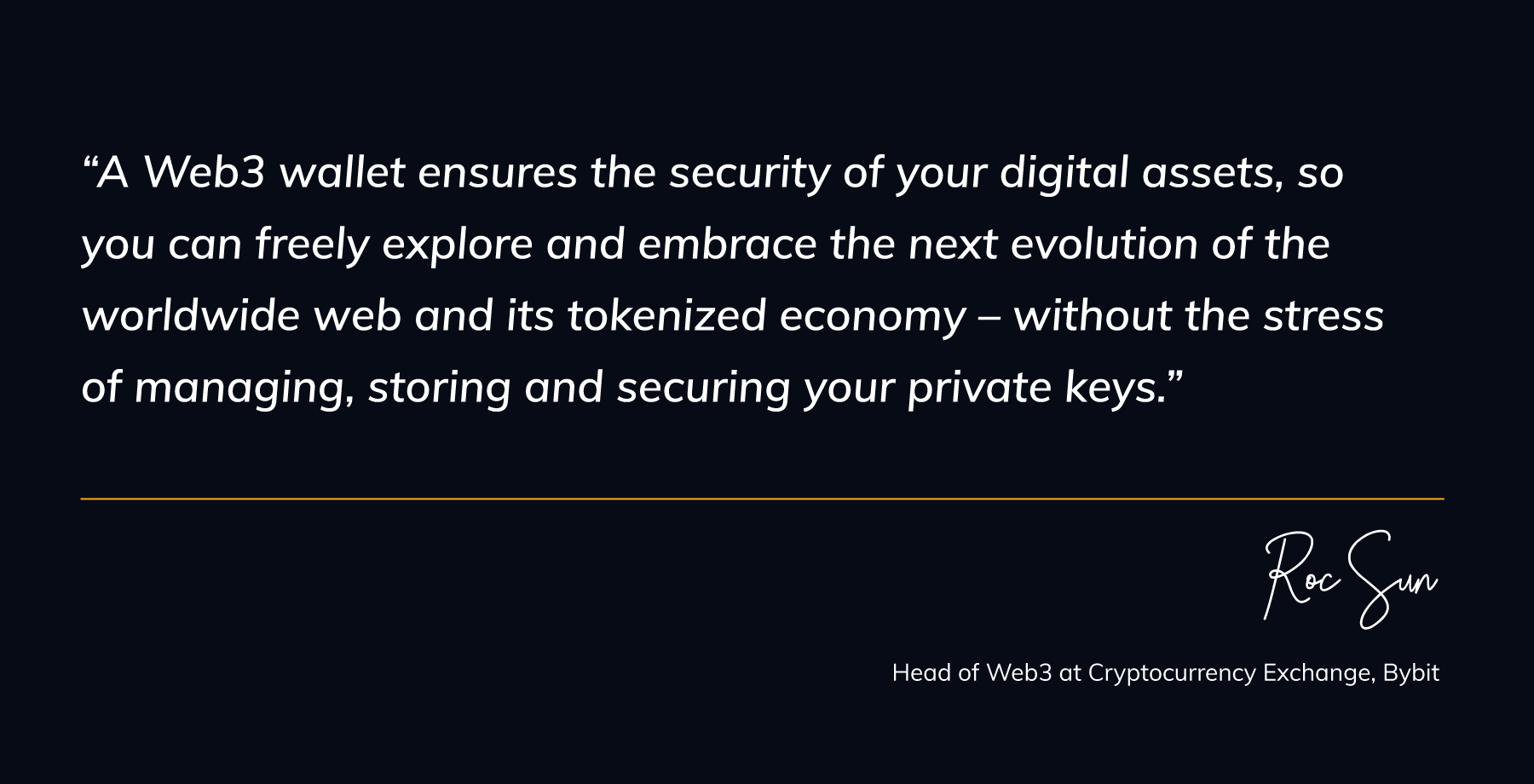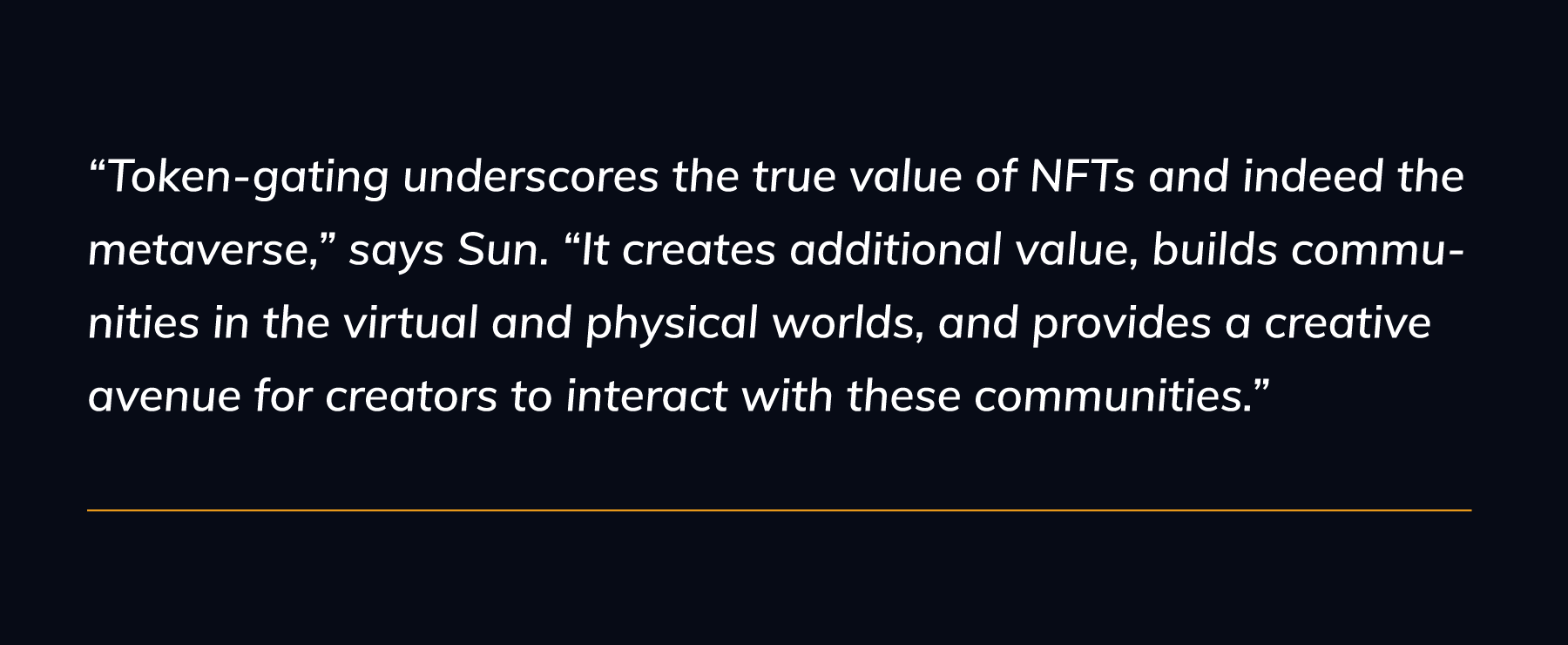Web3 Wallets: Your Vehicle for the Metaverse
There was a time not long ago when you wouldn’t dream of leaving home without your wallet. Your cash, bank cards, ID, and driver’s license all neatly stashed inside–these were essential to navigate and sustain yourself in the physical world.
But with the rise of digital gadgets like the smartphone has come the decline of the physical wallet. As payments and identities have become increasingly digitized, smartphones have become the bridge between our physical and digital worlds.
But what about transactions in our virtual worlds? In the metaverse, digital possessions and money are represented by non-fungible tokens (NFTs) and cryptocurrencies, respectively, which provide proof of ownership and data security, and facilitate transactions. NFTs, which can be digitized art, music, video or even intellectual property rights, and cryptocurrencies enable the decentralization that lies at the heart of the metaverse, adding structure, security and credibility without the need for a centralized or government authority. Moreover, in a virtual world where things can simply be programmed into existence, they create the scarcity that gives these things value.
Just as we manage our physical assets by putting them in our pockets, in drawers, beneath roofs and in safes, and our money by putting it in banks and investments, so too do we need to manage our assets in the virtual world. That’s where Web3 wallets come in.
A Web3 wallet is essentially the digital equivalent of the leather wallet, except that beyond storing money and proof of identity, it can store and manage other digital assets. It does so by storing the cryptographic keys that underpin Web3 security and grant access to your tokens and assets.
Web3 wallets also play a critical role in managing our evolving digital identities, facilitating a single identity across all platforms that is linked to your wallet:


Generating Exclusivity
If NFTs and cryptocurrency create scarcity, then token-gating creates exclusivity. Essentially, users who have Web3 wallets that store their NFTs can take advantage of token-gating, which provides a way to reward people for owning a particular NFT. These rewards may take the form of exclusive or first access, latest products, special discounts, valuable experiences or content, for example. This gives creators more visibility over the exclusive members who have access to their content, while providing more value to those who hold tokens based on their level of support.
Token-gating also helps foster community-building, bringing token holders together for valuable information exchange and shared experiences. A common example of this is private Discord channels available only to token holders. VeeCon is another example – a multi-day conference hosted by entrepreneur Gary Vaynerchuk that is accessible only to those who own VeeFriends tokens.
In 2021, Kings of Leon became the first band to release an album, “When You See Yourself”, as an NFT. They did so in three tiers: one offering a traditional album package, another special audiovisual art created by the band’s long-time artistic collaborator, and the most exclusive granting four front-row tickets to any concert, on any tour, for life.

There are burgeoning retail case uses for token gating too. E-commerce platform Shopify has introduced a feature whereby brands can token-gate their stores, granting access to exclusive merchandise, collections and events.
“While still in its nascent stages, this feature has the potential to revolutionize how brands interact with their fans,” says Sun. “It can help to grow customer engagement and loyalty, which is crucial in light of today’s hyper-competitive marketplace and the fact that 65% of the average company’s sales come from existing customers.”

The Gatekeeper
Web3 wallets enable token-gating by proving ownership of a particular token through a simple verification process. Once ownership is verified, the owner is granted exclusive access to gated content and special offers. This deepens the link between transactional history and digital identity inherent to a Web3 wallet.
It also emphasizes how important it is to choose a wallet built with ease of use and robust security in mind, such as the Bybit Wallet. Sun says the wallet is built around Bybit’s ethos of enabling crypto users to achieve their dreams and freedom.
“Being a custodial wallet means that users don’t need to manage their security keys and cryptocurrency addresses,” he explains. “Instead, by logging into their wallets, users authorize Bybit to perform transactions on their behalf. By blending easy access and management with Bybit’s industry-leading security ecosystem, the Bybit Wallet is uniquely positioned to empower users to engage with and leverage the exciting possibilities offered by Web3. For example, interested investors can follow Bybit IDO announcements to join pre-listing token sales.”
Bybit’s uniqueness comes from this mantra for its custodian Web3 wallet: Easy to Use, Easy to Manage, Easy to Trust and Easy to Access.
Disclaimer: The products or services described in this article is not intended to be made available to Japanese investors.
